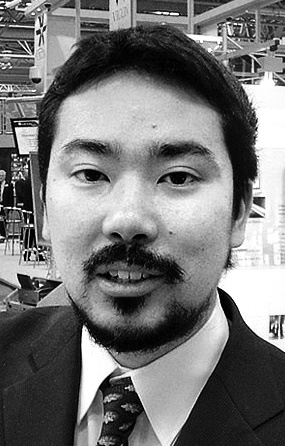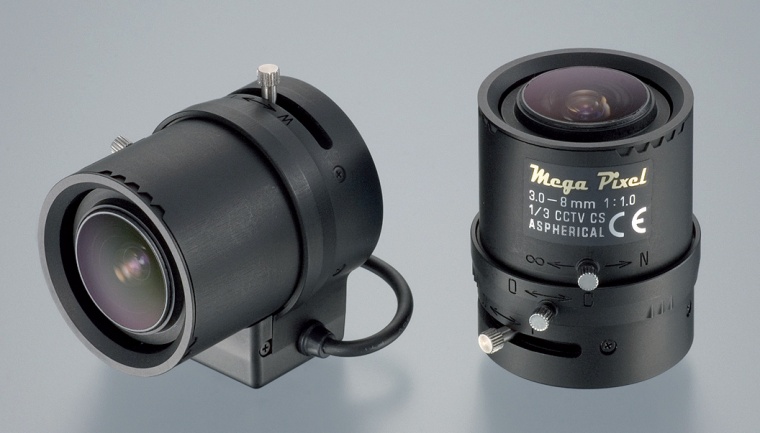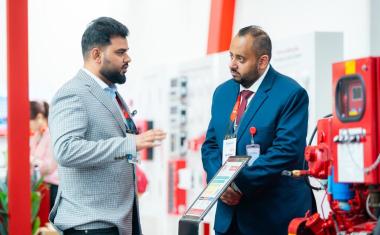Tamron Europe: optical lenses - more than just an accessory
Tamron Europe: optical lenses - more than just an accessory. It is probably clear to everybody that a video surveillance system without a lens is completely useless. But most peopl...



Tamron Europe: optical lenses - more than just an accessory. It is probably clear to everybody that a video surveillance system without a lens is completely useless. But most people underestimate the significant influence the choice of the right lens has on the performance of the system. The lens is the first “bottleneck”, which restricts the amount of information passing through the lens. Any information lost through the lens cannot be recovered, even with the best sensors or the most expensive software.
Compared to the price of the complete system, the lenses are relatively cheap. They cost only a fraction of what has to be spent on the cameras and the recorders. Maybe that is why the lens is highly underestimated and rather seen as some kind of necessary accessory. Unfortunately, this train of thought is entirely wrong. Looking at some other industrial sectors like, for example, the photo industry or the film industry, you can see that the lenses have practically the same significance as the cameras themselves.
Every SLR hobby photographer knows he will have to spend approximately the same amount on the lens as on the camera body.
The Search for the Right Lens
But how do you recognise a lens that provides very good performance at a reasonable price? Unfortunately, here you can also draw a comparison to the photo industry. There can be miles between the image qualities of two different 12 megapixel consumer digital cameras (which is also dependent upon the built-in lens, by the way). You cannot tell which camera is the better one just on the basis of its specifications.
The situation is similar with the lenses used for security surveillance. Every manufacturer is likely to have a 3-8 mm (±1mm) with F/1.0 in its programme. The price of lenses with exactly the same catalogue specifications can vary from a few Euros up to €100. The only indications of the quality of a lens available to a potential customer, without testing the lens himself, are the price and the salesman‘ s recommendation. The price reflects the amount invested in the design and the development of a product, especially in such a highly competitive industry as video surveillance.
The Differences between the Lenses
But how does the investment of a lens manufacturer become noticeable in a video surveillance system? When you look at, for example, the light value of a lens, it has no significance for the image quality. It indicates only the amount of light passing through the lens which usually depends on the diameter of the lens element. When more light is needed, you can simply increase the effective diameter of the lens element and you will meet the necessary criteria for a light value of F/1.0.
This is not a big challenge for any lens manufacturer. But it is much harder to achieve good image quality at the same time. Light rays that go through the edges of a lens element and have a larger distance to the optical axis do not arrive exactly at the focal point. This error increases with the diameter of the lens element. Therefore increasing the diameter of a lens element will result in a brighter image, but a lower resolution.
A remedy in this case is, for example, to use aspherical lens elements which have a specially formed surface and make sure the light rays from the edge are brought to the focal point (fig. 1).
However, the manufacturing of those lens elements is not that simple and incurs higher costs. Worldwide there are only very few companies that currently have the ability to manufacture such aspherical lens elements. The lens body of a security surveillance lens usually contains just one or a maximum of two such special lens elements. The interaction with the other lens elements has to be perfect to achieve the maximum quality.
Therefore it is easier for manufacturers of aspherical lenses to adjust their own lens elements to each other in a system.
Digitalisation and “Megapixels”
Digitalisation and the increase in resolution make the choice of the right lens even more important. As already mentioned, lenses have their weaknesses at their edges. CRT displays have the same problem, so little weight has previously been put on the edge areas. Flat screens do not have those same weaknesses, so with the progression to higher resolution systems, the importance of the edge areas in a picture is increasing.
This means that the edge light rays make the big difference in lens quality. Lenses have always been important, but their importance will increase in the future. The choice of a lens has a large influence on the overall performance of a surveillance camera. It is quite possible to take better pictures with a good lens and a cheap camera, than with a good and expensive camera and a cheap lens, because less information will pass through the lens.
Of course you can only achieve optimum image quality with a very good lens as well as a very good camera.
Contact:
Toshimasa Wada
Dipl.-Ing. (FH) Margarete Betger
Tamron Europe GmbH,
Cologne, Germany
Tel.: +49 221 97 03 25 0
cctv@tamron.de
www.tamron.de/cctv
most read

The Benefits of AI-based Video Surveillance Solutions for Sports Venues
Dallmeier Interview: Artificial intelligence Makes Stadiums Smarter

Is Your Venue Ready for Martyn’s Law?
Martyn’s Law demands stronger security by 2027. Is your venue prepared to protect and respond?

Intersec Saudi Arabia 2025 Concludes With Record Exhibitor Participation and Strong Industry Engagement
The seventh edition of Intersec Saudi Arabia showcased 434 exhibitors from 40 countries and welcomed 23,894 attendees

GIT SECURITY AWARD 2026 - The winners have been announced!
GIT SECURITY AWARD 2026: The best safety and security solutions of the year - now an overview of all winners

Security management, building security & perimeter protection: the winners of category E at the GIT SECURITY AWARD 2026
GIT SECURITY AWARD 2026: Security management, building security & perimeter protection - an overview of the most innovative solutions








